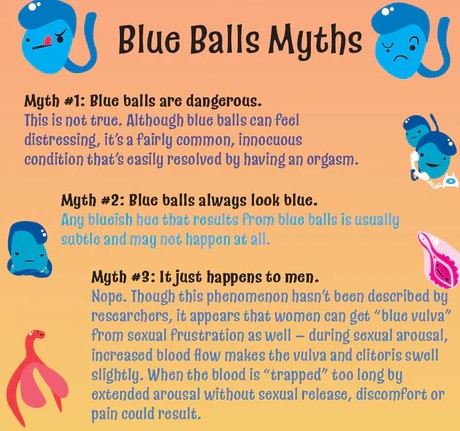BOURSESSENEGAL – Many people experience discomfort during intimate moments, and one common issue that often goes unaddressed is blue balls. This condition occurs when sexual arousal doesn’t lead to ejaculation, resulting in a build-up of pressure and discomfort in the testicles. While it’s not harmful, understanding balls is essential for addressing the issue and ensuring a more enjoyable sexual experience. In this article, we’ll explore the causes, symptoms, and potential remedies for balls.
What Are Blue Balls?
Blue balls, medically known as “epididymal hypertension,” refers to the discomfort some men feel in the testicles following prolonged sexual arousal without ejaculation. This sensation can range from mild discomfort to more significant pain. The term “balls” comes from the bluish tint that may appear on the skin due to increased blood flow and pressure in the area.
During sexual arousal, blood flow to the genital area increases, leading to an erection. If this arousal does not lead to ejaculation, the blood vessels remain dilated, causing pressure. Over time, this pressure can lead to discomfort, sometimes referred to as blue balls.
Causes of Blue Balls
Prolonged Arousal
One primary cause of blue balls is prolonged sexual arousal without climax. When arousal continues for an extended period, the body responds by directing more blood to the penis and testicles. If the stimulation stops without ejaculation, discomfort can arise.
Lack of Orgasm
Another significant factor contributing to blue balls is the lack of orgasm. Many men experience this sensation after engaging in foreplay or sexual activity that does not culminate in ejaculation.
Emotional and Psychological Factors
Sometimes, emotional stress or anxiety about sexual performance can contribute to the feeling of blue balls. Worrying about pleasing a partner or meeting expectations can lead to heightened arousal without release, increasing discomfort.
Symptoms of Blue Balls
Recognizing the Signs
The symptoms of blue balls can vary from person to person. However, common signs include:
- Discomfort in the Testicles: This feeling can range from mild discomfort to significant pain.
- Aching or Heaviness: Many men report a heavy sensation in the testicles.
- Bluish Tint: In some cases, the skin around the area may appear slightly bluish due to increased blood flow.
Duration of Symptoms
The symptoms of balls can last from a few minutes to several hours. However, they typically resolve on their own once the body returns to its normal state of arousal.
How to Relieve Blue Balls
Ejaculation
The most straightforward solution to relieve balls is ejaculation. Engaging in sexual activity until climax can help alleviate discomfort. If you’re in a situation where this isn’t possible, consider other methods to achieve release.
Physical Activity
Engaging in physical activity can redirect blood flow and reduce the pressure in the genital area. Activities like running, cycling, or even doing a few stretches can help alleviate symptoms.
Change Positions
If you’re with a partner, changing positions during sexual activity can sometimes help relieve discomfort. Shifting focus away from stimulation may help the body reset its arousal levels.
Relaxation Techniques
Stress and anxiety can exacerbate feelings of discomfort. Practicing relaxation techniques, such as deep breathing or mindfulness, can help alleviate tension and reduce discomfort associated with balls.
Preventing Blue Balls
Communication with Partners
Open communication with your partner can help prevent the discomfort associated with blue balls. Discussing boundaries and desires can lead to a more fulfilling sexual experience for both partners.
Understanding Your Body
Learning to recognize your body’s signals can help you manage arousal levels. If you notice that prolonged arousal often leads to discomfort, consider changing your approach to sexual activity.
Timing and Pace
Taking your time during sexual activity can help prevent the build-up of pressure. If you sense that ejaculation is not forthcoming, slowing down can reduce the likelihood of experiencing blue balls.
When to Seek Medical Attention
Persistent Pain
While blue balls are generally not harmful, persistent or severe pain in the testicles can indicate a more serious condition. If you experience significant discomfort that doesn’t subside after a short time, it’s essential to consult a healthcare professional.
Other Symptoms
If blue balls are accompanied by other concerning symptoms, such as swelling, fever, or changes in urination, seek medical attention promptly. These could indicate a more severe condition, such as an infection or torsion.
Conclusion: Navigating Blue Balls
In summary, understanding blue balls is crucial for managing discomfort that can arise during sexual activity. This condition, while uncomfortable, is not dangerous and often resolves on its own. Recognizing the causes, symptoms, and remedies can empower you to handle the situation with confidence.
Whether through ejaculation, physical activity, or relaxation techniques, various ways exist to relieve the discomfort associated with balls. Communication with your partner and understanding your body’s signals can help prevent this issue in the future.
Remember, experiencing balls is a common phenomenon for many men. By educating yourself about it, you can navigate your sexual experiences more effectively and ensure a pleasurable outcome for both you and your partner.
REFERENCE : pondok77



